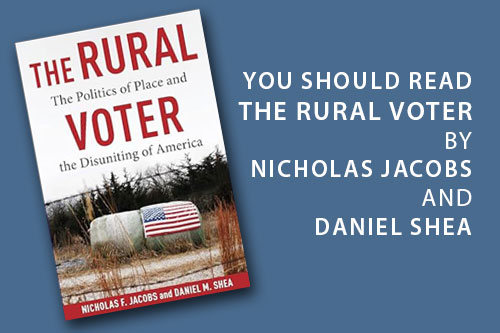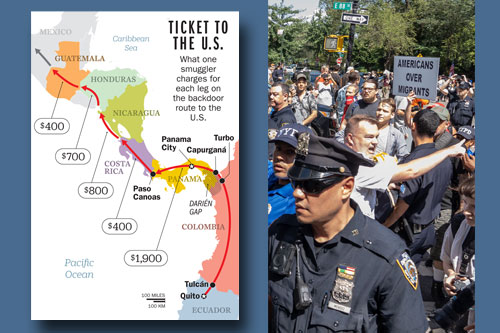The following article, “Americans are unhappy with the state of health care and insurance” by Monica Potts, Cooper Burton, Holly Fong and Amina Brown, is cross-posted from abcnews/538:
When Luigi Mangione, the 26-year-old suspect in the Dec. 4 murder of United Healthcare CEO Brian Thompson, was arrested and taken into a Pennsylvania courthouse in an orange jumpsuit, he turned to the crowd of reporters and onlookers on the street and yelled that his arrest was “an insult to the intelligence of the American people and their lived experience.”
He was presumably referring to Americans’ experiences with the health care system, and the public reaction to Thompson’s murder has put a fine point on just how many Americans are very unhappy with it. When news about the predawn, execution-style shooting in Manhattan broke, the reaction online was largely driven not by sympathy for Thompson, but by Americans’ frustrations with the health care system and insurance industry — as a flood of social media users shared stories of denied health insurance claims and health care costs spinning out of control.
In fact, the shooting came at a time when health care seemed to be experiencing a bit of a surge in importance among Americans after the election. The share of registered voters who named it as the most important issue facing the country in YouGov/The Economist tracking polls had gradually declined from around 10 to around 7 percent throughout 2024, and even fewer, 4 percent, said it was the top issue specifically in determining their vote in the election. But after the election, that number has gone back up to between 8 and 11 percent.
A YouGov poll last week also found that more Americans, 49 percent, had an unfavorable view of the American health care system than the 42 percent who had a favorable one. Other polling suggests that Americans are as unhappy as they ever have been in recent years with the current state of health care. And while many Americans pointed fingers at the opposing party for the problems they see, more than 6 in 10 overall agreed that pharmaceutical and health insurance companies, as well as corporate executives like Thompson, were to blame for problems in the American health care system.
The U.S. remains unique among its peer nations in relying on a for-profit health insurance system and, as Mangione’s own writings alluded to, many Americans have expressed rage at a system that can deny coverage for people’s medical treatments while making shareholders and CEOs very rich. Despite decades of presidents trying to ensure universal access to health insurance, about 8 percent of Americans remained uninsured as of last year, and a higher percentage, about a quarter of American adults, said they or a family member had struggled to afford health care over the past year, whether they were insured or not.
By and large, Americans are unhappy with the costs of care and often find their insurance difficult to use. The share who rated the quality of health care in this country as “excellent” or “good” was just 44 percent in Gallup’s annual health and health care survey, conducted Nov. 6-20, its lowest point since 2001, when Gallup began asking the question. Even fewer, 28 percent, said the same about health care coverage — i.e., what insurance programs do — the lowest it has been since 2008, two years before the passage of the Affordable Care Act, the signature Obama-era legislation that overhauled health insurance by expanding Medicaid, requiring health insurance companies to cover certain levels of care, subsidizing premiums for low- and middle-income families and banning practices like refusing to cover preexisting conditions.
A growing share of Americans in Gallup’s surveys seem to want the government to take action to improve health care access: 62 percent said it was the federal government’s responsibility to ensure all Americans have health care, the highest it’s been since 2007. Republicans are the least likely to agree with this sentiment — 32 percent said so, compared to 90 percent of Democrats and 65 percent of independents — but those numbers have increased by around 20 percentage points among all three groups over the past decade or so.
Perhaps surprisingly, YouGov polling found that around two in three Americans are at least somewhat satisfied with their health insurance plans — but that topline figure doesn’t capture a lot of nuance. For example, 89 percent of those with Medicaid were satisfied with their health coverage, compared to 75 percent who are covered by an employer-sponsored plan. Unsurprisingly, those who had had an insurance claim denied were also more likely to be dissatisfied with their coverage.
And despite many being mostly satisfied with the plans they have, a high number of Americans still experience problems using them. KFF, a nonprofit health policy research organization, found in a survey last year that 58 percent said that they had at least some trouble using their insurance in the previous year — including issues like denied claims or difficulty accessing in-network providers — and nearly half of whom said their biggest problem was not resolved to their satisfaction. Overall, 18 percent of Americans with health insurance had experienced a denied claim, and those were more common among people with private or employer-sponsored insurance. Around a quarter of those who’d had a claim denied suffered serious consequences, like a decline in health or not receiving recommended medical care.
Plus, around half of insured adults had at least some difficulty understanding components of their health insurance. Unsurprisingly, around 9 in 10 Americans said they support more government rules to require companies to make insurance easier to use, such as by maintaining up-to-date provider directories.
It’s in this context that President-elect Donald Trump and his Republican Party will go into office with sweeping but vague plans to overhaul health care — including to potentially overturn the Affordable Care Act. But while replacing the law has long been something of a GOP rallying cry, it’s not clear how the public feels about it. Gallup found that Americans are fairly split on whether they’d prefer a system that relies on private insurance (49 percent) or a government-run health care system (46 percent). The ACA itself remains highly polarizing but popular among the public more than a decade after its passage.
Fifty-four percent of Americans in Gallup’s most recent survey approved of the legislation, near the record high of 55 percent reached in 2017 and 2020. Specific policies under the ACA have broader support. For example, a YouGov poll from Dec. 5 found that a plurality, 46 percent, wanted government-subsized health insurance, like that provided by the ACA, to be expanded, while 19 percent said it should remain as is and only 13 percent said it should be reduced. That included 53 percent of Republicans in favor of keeping or expanding government-subsidized insurance and only 25 percent in favor of reducing it.
— Monica Potts








